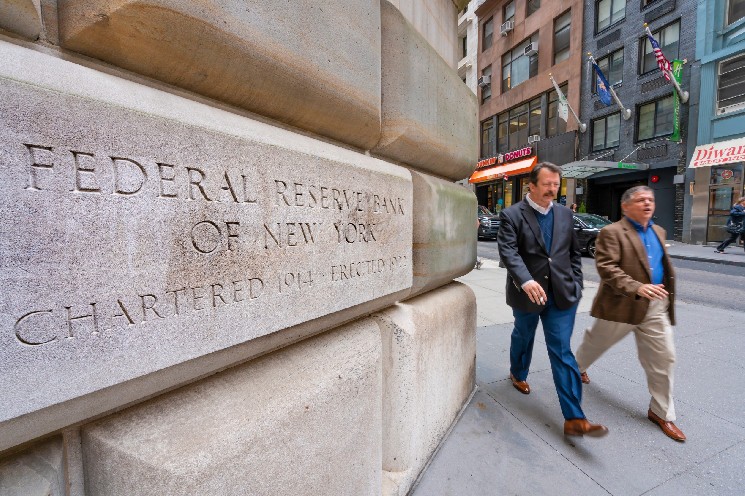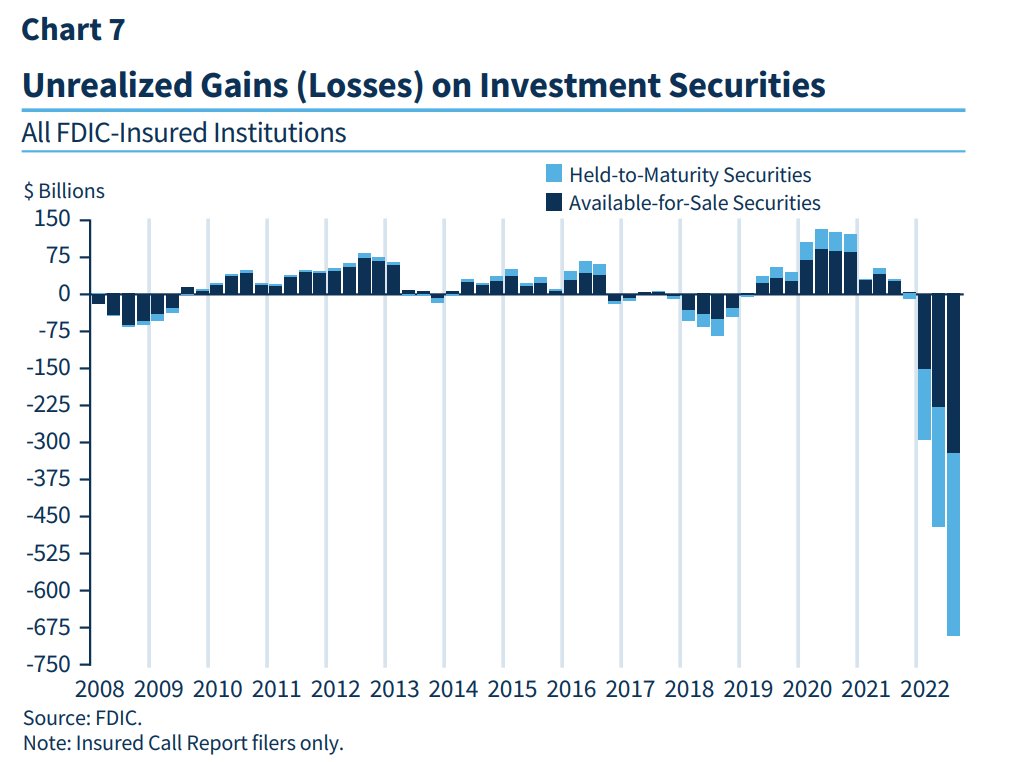FedNow: Digital Dollars without the Tokens

In July this year, the Federal Reserve will launch the most significant financial innovation in its history – FedNow. This 24/7 instant payment infrastructure has all the hallmarks of a CBDC precursor. However, is the tokenized dollar even needed?
Levels of Liability Expressions
When innovation comes along, the best way to grasp its importance is to place it in an existing framework. From this point of view, what is USD in its current form?
- Firstly, USD is a central bank’s note, expressed as a physical item. It is an anonymous form of the central bank’s liability. In turn, USD holders are exposed to the central bank’s liability via its money supply manipulation, such as the interest rate hiking cycle.
- Secondly, USD is an electronic record of the central bank’s balance sheet. As Fed Chair Jerome Powell put it, “we have the ability to create money digitally. And we do that by buying Treasury Bills or bonds for other government guaranteed securities.”
In other words, central banks’ liabilities come from banknotes and commercial bank reserves. Typically, the latter holds the bulk of the total money supply in their balance sheets. In both forms, this money is a type of IOU as a legally recognized vehicle to settle transactions.
Accordingly, the central bank guarantees the convertibility of commercial banks’ balance sheets into physical banknotes. By the same token, the role of the central bank is to provide this liability from its balance sheet.
It’s All About Ledgers
If the Fed can already “create money digitally,” what does having a Central Bank Digital Currency (CBDC) mean? If the central bank already creates such money as an expression of its balance sheet, what would be different with CBDCs?
Fortunately, there is little ambiguity on this question, courtesy of the BIS chief, Agustin Carstens:
“The key difference with the CBDC is that the central bank will have absolute control on the rules and regulations that will determine the use of that expression of central bank liability. And also, we will have the technology to enforce that.”
Agustin Carstens, general manager of the Bank for International Settlements (BIS)
The present pre-CBDC system works through different accounting layers. Commercial banks serve as the secondary money layer to the primary layer of the central bank. These layers are ledgers from which transactions are added and subtracted.
What CBDCs represent is the unification of those layers. However, the digital token itself – a retail CBDC such as Chinese eCNY – would simply be an extra utility of the new network infrastructure. For instance, BTC is a token of Bitcoin’s distributed ledger, keeping track of all transactions as a type of energy receipt from miners.
Because Bitcoin launched as a decentralized ledger without hierarchical top-down control, BTC was already baked in the DLT cake.
But within the context of the Federal Reserve, distributed ledger technology (DLT) would be deployed under the rules and conditions of the central bank. The upcoming FedNow network is a step in that direction, which may or may not build up to retail CBDCs.
After all, digital dollars already exist under the central bank’s control.
FedNow: More Stable and Efficient Financial System?
In March 2020, in a 60 Minutes interview, one of the Fed Governors, Neel Kashkari, said that “there is an infinite amount of cash at the Federal Reserve”. As already noted, this somewhat fantastical claim is born of the fact that the central bank is the sole entity that can “create money digitally” to express its electronic ledger.
This means that the central bank can be insolvent and have negative equity. The Fed’s balance sheet read $44.2 billion in unrealized losses at the end of March. However, when commercial banks go into negative territory, they are at risk of collapse, as happened with Silicon Valley Bank.

In March, commercial banks held over $700 billion in unrealized gains (losses). Image credit: FDIC
With FedNow in play, potential stress in the banking system can be relieved. When connected to FedNow, all financial institutions can settle payments instantly, 24/7, removing the long-standing payment legacy of having to wait 3-4 business days. More importantly, FedNow network participants can access cleared funds on the same payment day for commercial banks.
Previously, there was a considerable gap between made payments and those payments become available. FedNow’s intraday access to funds would provide commercial banks with a superior and more stable liquidity management system.
FedNow: No Need for Retail CBDCs?
If financial institutions connect to the Federal Reserve via FedNow, all the lower-tier economic participants also connect to it. For instance, a business would use FedNow automatically via its commercial bank/credit union. In turn, a customer interacting with the business would also use FedNow.
If the FedNow rules are tweaked down the line, it would be the role of commercial banks to trickle them down to customers.
This is made possible by ISO20022, a new financial standard for relaying electronic data between financial institutions, regardless of country and language. Given that the USD enjoys the status of global reserve currency (GRC), this also means that FedNow is poised to become a new clearing house for most of the world’s transactions.
Could FedNow Endanger Cryptocurrencies?
In the blockchain space, two key factors determine a network’s performance – transaction settlement time and settlement cost. FedNow charges $0.045 per transaction for payments up to $100,000. Moreover, financial institutions must only pay a $25 monthly access fee.
This is drastically cheaper than running any blockchain node.
In addition to instant settlements, this makes FedNow the most cost-efficient payment network in the world. For comparison, although Binance Smart Chain (BSC) has a near-instant performance of 3 seconds, its average network fee is 4x more expensive than FedNow’s, at $0.189.
The blockchain trilemma is not in effect because FedNow doesn’t have to worry about decentralization. FedNow can be scalable and secure, likely more than any other existing or future public blockchain network.
With that said, Bitcoin’s Lightning Network is equal to FedNow’s performance, both in terms of ultra-low fees and speed. Most importantly, if the Fed decides to dilute the value of USD through its monetary policies, Bitcoin would be a viable hedge against such USD debasement.
In this context, FedNow may only speed up the process of fiat-to-crypto inflows, making it more convenient. However, if the condition of using FedNow is for banks to de-platform crypto businesses via Operation Chokepoint 2.0, the decentralized blockchain space may find itself in a liquidity bind. It may also happen that banks would have to conform to other conditions when using FedNow, placing integrated FedNow banks into an advantageous position.







 Bitcoin
Bitcoin  Ethereum
Ethereum  Tether
Tether  USDC
USDC  Dogecoin
Dogecoin  Cardano
Cardano  TRON
TRON  Bitcoin Cash
Bitcoin Cash  Chainlink
Chainlink  Polygon
Polygon  Litecoin
Litecoin  LEO Token
LEO Token  Dai
Dai  Ethereum Classic
Ethereum Classic  Hedera
Hedera  Stacks
Stacks  Cronos
Cronos  Stellar
Stellar  Cosmos Hub
Cosmos Hub  OKB
OKB  Maker
Maker  Theta Network
Theta Network  Monero
Monero  Algorand
Algorand  NEO
NEO  Gate
Gate  Tezos
Tezos  KuCoin
KuCoin  EOS
EOS  Synthetix Network
Synthetix Network  IOTA
IOTA  Bitcoin Gold
Bitcoin Gold  Tether Gold
Tether Gold  TrueUSD
TrueUSD  Enjin Coin
Enjin Coin  Zilliqa
Zilliqa  Holo
Holo  Ravencoin
Ravencoin  0x Protocol
0x Protocol  Siacoin
Siacoin  Qtum
Qtum  Basic Attention
Basic Attention  Dash
Dash  Zcash
Zcash  NEM
NEM  Decred
Decred  Ontology
Ontology  Lisk
Lisk  Waves
Waves  DigiByte
DigiByte  Status
Status  Numeraire
Numeraire  Nano
Nano  Pax Dollar
Pax Dollar  Hive
Hive  Steem
Steem  Huobi
Huobi  OMG Network
OMG Network  BUSD
BUSD  Ren
Ren  Bytom
Bytom  Bitcoin Diamond
Bitcoin Diamond  HUSD
HUSD  Kyber Network Crystal Legacy
Kyber Network Crystal Legacy  Energi
Energi  Augur
Augur